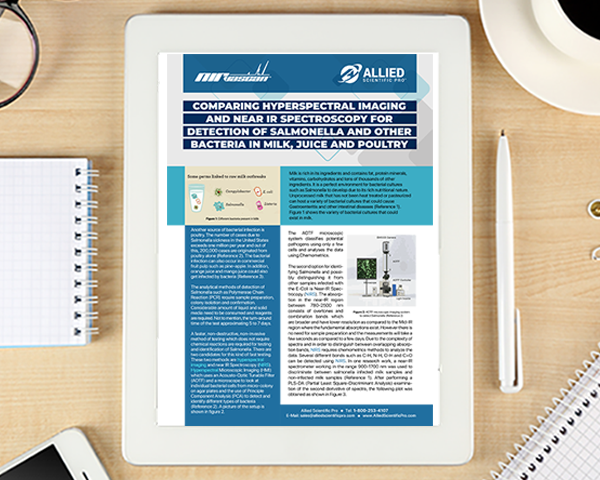Application Note: Comparing Hyperspectral Imaging and Near IR Spectroscopy for detection of Salmonella and other bacteria in milk, juice and poultry
- Like
- Digg
- Del
- Tumblr
- VKontakte
- Buffer
- Love This
- Odnoklassniki
- Meneame
- Blogger
- Amazon
- Yahoo Mail
- Gmail
- AOL
- Newsvine
- HackerNews
- Evernote
- MySpace
- Mail.ru
- Viadeo
- Line
- Comments
- Yummly
- SMS
- Viber
- Telegram
- Subscribe
- Skype
- Facebook Messenger
- Kakao
- LiveJournal
- Yammer
- Edgar
- Fintel
- Mix
- Instapaper
- Copy Link
Posted: 9 December 2020 | Allied Scientific Pro | No comments yet
Milk is rich in its ingredients and contains fat, protein minerals, vitamins, carbohydrates and tens of thousands of other ingredients.
It is a perfect environment for bacterial cultures such as Salmonella to develop due to its rich nutritional nature. Unprocessed milk that has not been heat treated or pasteurized can host a variety of bacterial cultures that could cause Gastroenteritis and other intestinal diseases.
Another source of bacterial infection is poultry. The number of cases due to Salmonella sickness in the United States exceeds one million per year and out of this, 200,000 cases are originated from poultry alone. The bacterial infection can also occur in commercial fruit pulp such as pine-apple. In addition, orange juice and mango juice could also get infected by bacteria.
Related content from this organisation
Related topics
Equipment, Food Safety, Food Security, Health & Nutrition, Ingredients, Quality analysis & quality control (QA/QC)










